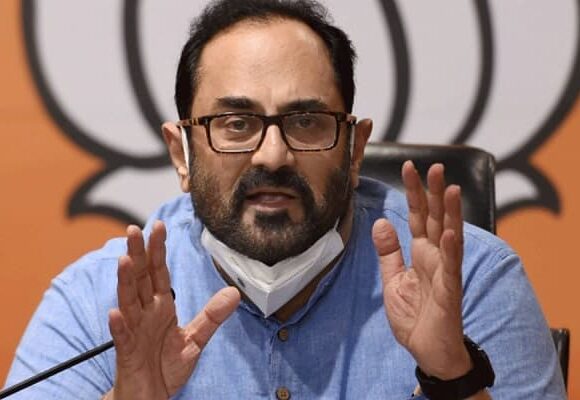LEVERAGE GOLD FOR INDIA’s INFRASTRUCTURE PUSH – V.P. NANDAKUMAR


LEVERAGE GOLD FOR INDIA’s INFRASTRUCTURE PUSH – UNIQUE TIMES
With a new government having taken power in India, expectations are riding high. At the same time, there is no getting away from the reality that the Indian economy continues to face inflationary pressures and a high fiscal deficit. The current account deficit is a concern even though it has eased recently after the imposition of stringent curbs on the import of gold. A permanent solution, however, is still not in sight.
Based on the pronouncements so far, it is clear that this government gives utmost priority to restoring India to the high growth path. The path mapped out involves a massive push to infrastructure. However, infrastructure is a costly business, and the government’s finances are not in sound shape. That explains the evident keenness to attract large scale foreign investment. So far, the going has been good with significant commitments made by Japan and China, and the others likely to follow. However, there is only so much distance you can travel on foreign money. Ultimately, sizable resources have to be mobilised from the domestic market as well, and that remains a formidable challenge.
In this context, the world’s largest stock of private gold is in India, about 20,000 tonnes. When gold is held idle in our lockers and vaults, it drags down the economy because billions of dollars in savings are kept out of the financial system. India’s privately held gold amounts to 800 billion dollars or so at today’s prices, a huge sum that could have been lent out to industries or used to build infrastructure. Seen from this angle, gold is our weakness. But the question is, can we somehow make it into our strength?
Indeed, we can. Our vast reserves of privately held gold can be tapped to wipe out the infrastructure deficit. So far, the talk about the monetisation of India’s gold has revolved around getting people to use it as collateral when borrowing from the banks. However, getting private gold come into the financial system as deposits would have an even greater impact. In other words, we should aim for a scenario where people who need money use their gold to borrow, and those who don’t need money place their gold as deposits with the banks. This gold can then be melted and sold in the domestic market. In this way, we raise the resources to finance infrastructure. We also cut down on the import of gold thereby easing pressures on our foreign exchange reserves.
How can this be done? I believe a simple way would be to substantially rework our existing gold deposit schemes as originally outlined in an opinion article titled “The Game’s Bond, Gold Bond” published in the Economic Times on October 15 last year. The article was authored Mr. I. Unnikrishnan, who was then Manappuram’s ED & Deputy CEO. Banks in India currently offer gold deposit schemes that have failed to take off for two reasons: Firstly, there is a lack of a retail push. Secondly, they offer lower returns to investors. For example, SBI offered just 1 percent interest even as the minimum deposit was kept high at 500 grams.
Ownership of gold in India is widely dispersed. A 2009 study by ICRA Management Consultancy (IMaCS) revealed that unlike other indicators of wealth, rural India holds 65% of the total private gold. How this has come about is not hard to grasp. Lacking access to banks, the financially excluded classes have traditionally parked their savings in gold, and draw against it during times of need. Therefore, without a retail focus, you cannot hope to make headway.
But the challenge of going retail is the logistics, in particular, setting up a nationwide chain of assaying agencies to ensure the purity of the jewellery collected. The gold loan NBFCs have the reach and the expertise to act as collection agencies. At Manappuram, we are even willing to underwrite, for a reasonable fee, the purity of the gold we collect. Once a retail collection infrastructure is in place, it becomes feasible to accept deposits as low as 10 grams. Of course, the government can further help by putting in place customer friendly KYC norms for this purpose.
The other challenge is about how to incentivize people into depositing gold with the government because melting ornaments into bullion inflicts a loss on the investor to the extent of its making charges. Clearly, a higher rate of interest (along with longer tenures of 5 years and more) is the way to go. But how high can returns go?
For an answer, we need to consider what we stand to gain from the exercise. Every tonne of gold mobilised in this way would save an import bill of US$40 million. In cricket, we know that a run saved by a good fielder is as good as a run scored. Therefore, gold collected under the scheme should be given the status of “quasi-dollar” — and offer returns equal to FCNR deposits of equivalent tenure. Interest would be paid on the value of gold assessed at the time of investment for the full tenure. Importantly, the interest is paid out in local currency and remains within the country unlike the interest paid on FCNR deposits.
At the same time, returns have to be kept flexible depending on the severity of the imbalance in our external account. This implies higher interest rates during times of crisis in the external account and lower rates when things are stable. It is worth noting that in 2013 when the Rupee was trading at an all-time low, India’s banks offered interest rates as high as 5.77 percent per annum in five years US dollar denominated FCNR deposits. Treating gold as quasi-dollar, there’s no reason why gold deposits should fetch anything lower.
The moot question now is, can the government meet the eventual redemption without suffering losses from adverse price movements? One way out is to stipulate a minimum lock-in tenure of 5 years or more so that by the time redemptions fall due, the scheme would have stabilised with steady inflows to even out the outflows. In case of a mismatch, inflows can be encouraged by suitably increasing interest rates. And should the worst come to worst, the Reserve Bank has about 600 tonnes of gold in reserves which can be put to use for redemptions.
Ownership of gold is a strength as far as the typical Indian family is concerned. But today, we are in this peculiar situation where, what is good for the individual household is somehow bad for the country. I believe it need not be. What seems to be a weakness today can very well become our strength. All that is needed is the political will and an openness to new ideas and fresh thinking.
V.P. Nandakumar.
Manappuram Finance MD and CEO








